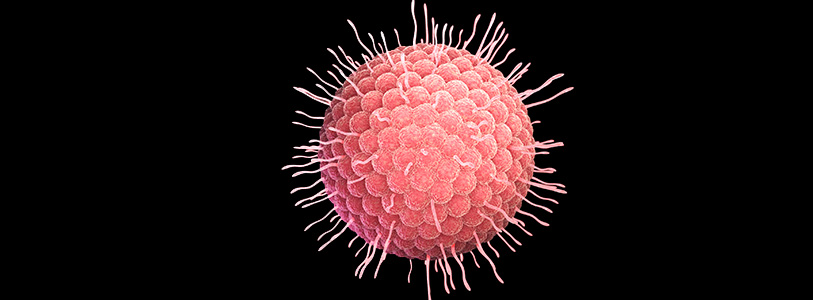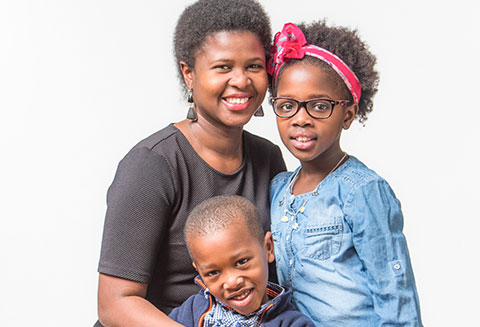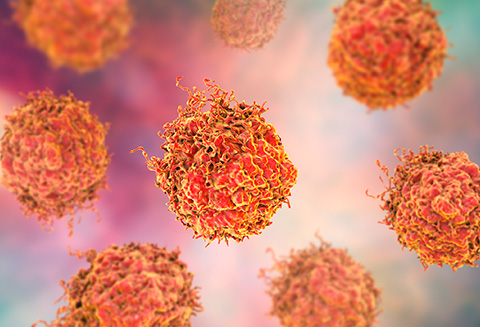Understanding the connection between chickenpox and shingles

Most people who had chickenpox in their childhood thought they had already seen the worst of it; after all, once a person has had the very contagious and uncomfortable condition caused by the varicella-zoster virus they won’t get it again unless they develop problems with their immune system. But now for the sobering fact: the varicella virus remains dormant in the nervous system and can surface later in life as shingles.
More articles from this issue
According to Dr. Alexis Oliveros, an internist at NewYork-Presbyterian Hudson Valley Hospital in Cortlandt Manor, “Shingles is an itchy and often painful rash that presents on one side of the body with an eruption of little blisters called vesicles and usually accompanied by fever.” The shingles virus is not spread through coughing or sneezing, but by inhaling virus particles from the rash.
“You cannot get shingles if you have not been infected by the chickenpox virus,” says Dr. Oliveros. “While a typical shingles episode lasts an average of ten days, some people who have shingles develop a condition called post herpetic neuralgia, which is a persistent pain in the area of the rash even after it has cleared up. This may last for months and, in rare cases, years. Fortunately, medications are available that can both shorten the duration of the painful rash and decrease the likelihood of post herpetic neuralgia if administered promptly.”
Vaccines to the rescue
Anyone who watches TV has most likely seen commercials for the shingles vaccine. There’s a huge emphasis for people over 50 to get the vaccine since shingles has a greater incidence in older adults. The National Vaccine Information Center (NVIC) reports that the popular vaccine, in use since 2006, is only about 51 percent effective in helping to prevent the blisters and pain. But the vaccine is 67 percent effective in protecting people from the very painful herpetic neuralgia.
People looking to receive the shingles vaccine now have two options. Says Dr. Oliveros, “In 2017, the Food and Drug Administration approved an antiviral vaccine called Shingrix as the preferred alternative to the commonly prescribed Zostavax. However, both vaccines are approved for adults age 50 and older for the prevention of shingles and related complications, whether they've already had shingles or not.” Minor side effects from the shot may include redness, soreness, swelling, or itching at the site of the injection and headaches. Although recurrence of shingles is uncommon, the vaccine will help prevent new outbreaks.
“As with all medications, it’s important to speak with your doctor about vaccination options. Zostavax cannot be given to people who have compromised immune systems, an active infection and fever, or anyone undergoing treatment for cancer,” says Dr. Oliveros. “Shingrix is typically given to those patients.”
Self-care tips to relieve painful symptoms
- Take daily baths: Daily cleansing of the blisters helps lessen the risk of spreading the infection. Take a cool bath or shower to soothe skin. The coolness of the water can ease pain from shingles blisters and calm itchiness. For extra soothing relief, add colloidal oatmeal, made of oats that have been ground to a very fine powder.
- Apply wet compresses: Apply cool, moist compresses to the affected area several times a day to relieve symptoms.
- Paste it on: Create a paste using cornstarch or baking soda and water to help naturally relieve itching. Pour two parts cornstarch or baking soda into a cup, and add one part water to get the desired consistency for the paste. Apply the mixture to your rash, and then rinse it off after 10 to 15 minutes. Repeat several times a day as needed.
- Spread the relief: Lotions and creams don’t speed up the healing process, but they can increase your comfort level. Avoid scented or perfumed lotions, which can cause further irritation.
- Wear loose clothing: You’ll likely find that relaxed fits made from natural fibers, such as cotton or linen, give you more comfort.
- Eat healing foods: A shingles diet consists of foods with vitamins A, B-12, C, and E, and the amino acid lysine. Some foods that promote healing include green leafy vegetables, red meat, whole grains, legumes, beans, spinach, and orange and yellow fruits.






